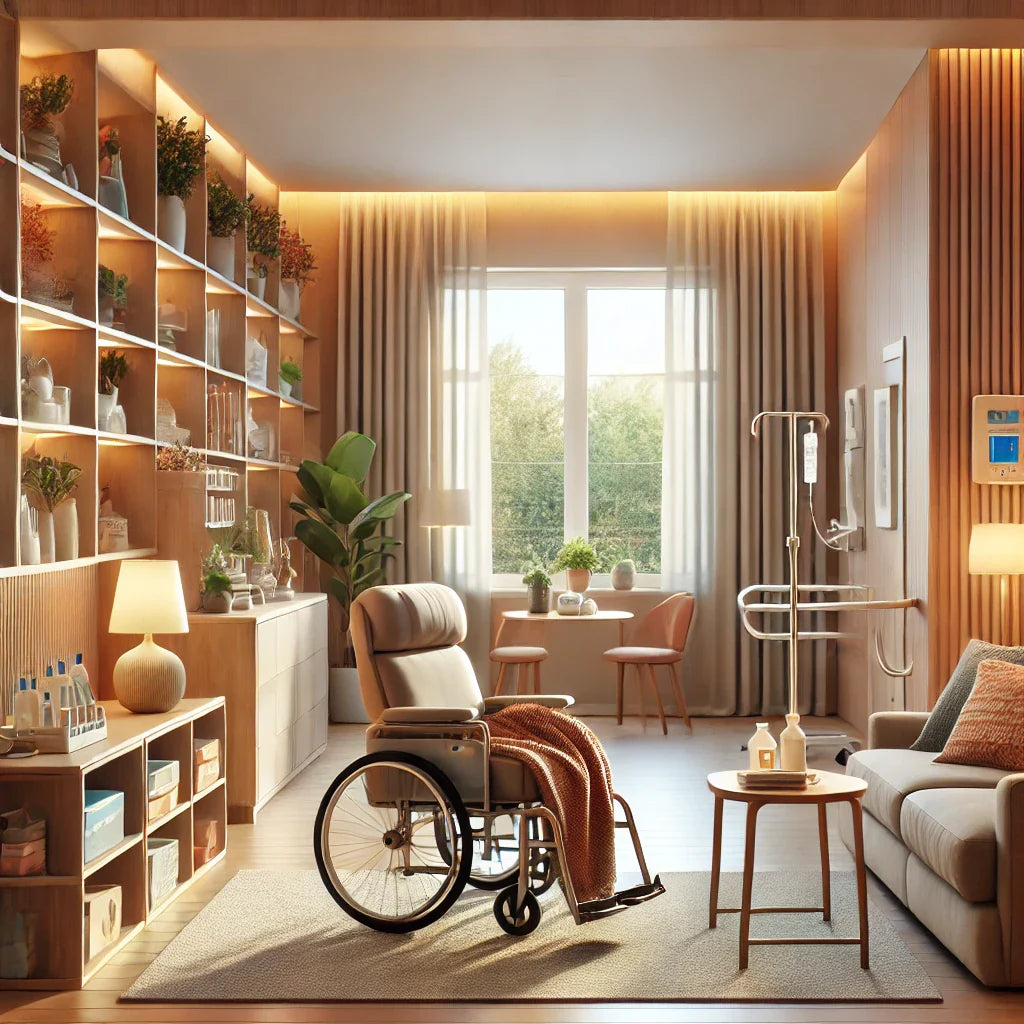
Home after a Health Issue: Creating a Supportive and Accessible Environment
Share
-
Assessing Your Needs: The first step in modifying your home is to assess your unique needs. Consider consulting with healthcare professionals, such as occupational therapists, who specialize in home modifications. They can evaluate your situation and recommend specific modifications based on your abilities, limitations, and recovery goals.
-
Entrance and Accessibility: Ensure that your home's entrance is easily accessible. Consider installing a ramp or a stairlift if mobility is an issue. Widening doorways and hallways can accommodate wheelchairs or walkers. Installing handrails or grab bars in critical areas, such as bathrooms and staircases, can provide stability and prevent accidents.
-
Bathroom Modifications: The bathroom is a crucial area that requires careful attention. Install a walk-in shower with a bench or seat, grab bars, and a handheld showerhead. Consider a raised toilet seat or a toilet with built-in handrails for increased comfort and accessibility. Non-slip mats and properly positioned lighting are also essential safety measures.
-
Kitchen Adaptations: Modifying your kitchen can enhance your ability to prepare meals and maintain independence. Lower countertops and cabinets to a comfortable height, allowing easy access from a seated position or wheelchair. Install lever-style handles on cabinets and drawers for easy grip. Consider appliances with accessible features such as front-mounted controls and side-opening ovens.
-
Bedroom and Living Areas: Ensure that your bedroom and living areas are optimized for your health needs. Install handrails or grab bars near the bed to aid with getting in and out. Choose a suitable mattress and adjustable bed if necessary for improved comfort. Rearrange furniture to create wider pathways for mobility aids, and consider removing tripping hazards such as loose rugs or low furniture.
-
Lighting and Electrical Adjustments: Proper lighting is crucial for safety and accessibility. Install bright, energy-efficient lighting in key areas, including hallways, staircases, and task areas like the kitchen and bathroom. Consider motion-sensor lighting for convenience. Replace traditional light switches with rocker switches or touch-sensitive switches that are easier to operate.
-
Technology and Home Automation: Explore the benefits of smart home technology and automation. From voice-controlled assistants to automated lighting and temperature control systems, these innovations can significantly improve accessibility and convenience. Smart home devices can be integrated with your smartphone or voice commands, allowing you to control various aspects of your home with ease.
-
Seek Professional Help: While some modifications can be accomplished through DIY efforts, it's advisable to consult professionals for complex projects. Contractors, architects, and interior designers experienced in accessible design can provide valuable insights and ensure that modifications meet safety standards and local building codes.
Conclusion: Modifying your home after a health issue is an important step towards creating a supportive and accessible environment. By assessing your needs and implementing appropriate modifications, you can regain your independence, reduce potential hazards, and enhance your overall well-being. Remember to consult with professionals and take into account your specific health requirements throughout the modification process. With a modified home, you can focus on your recovery and enjoy a higher quality of life.
